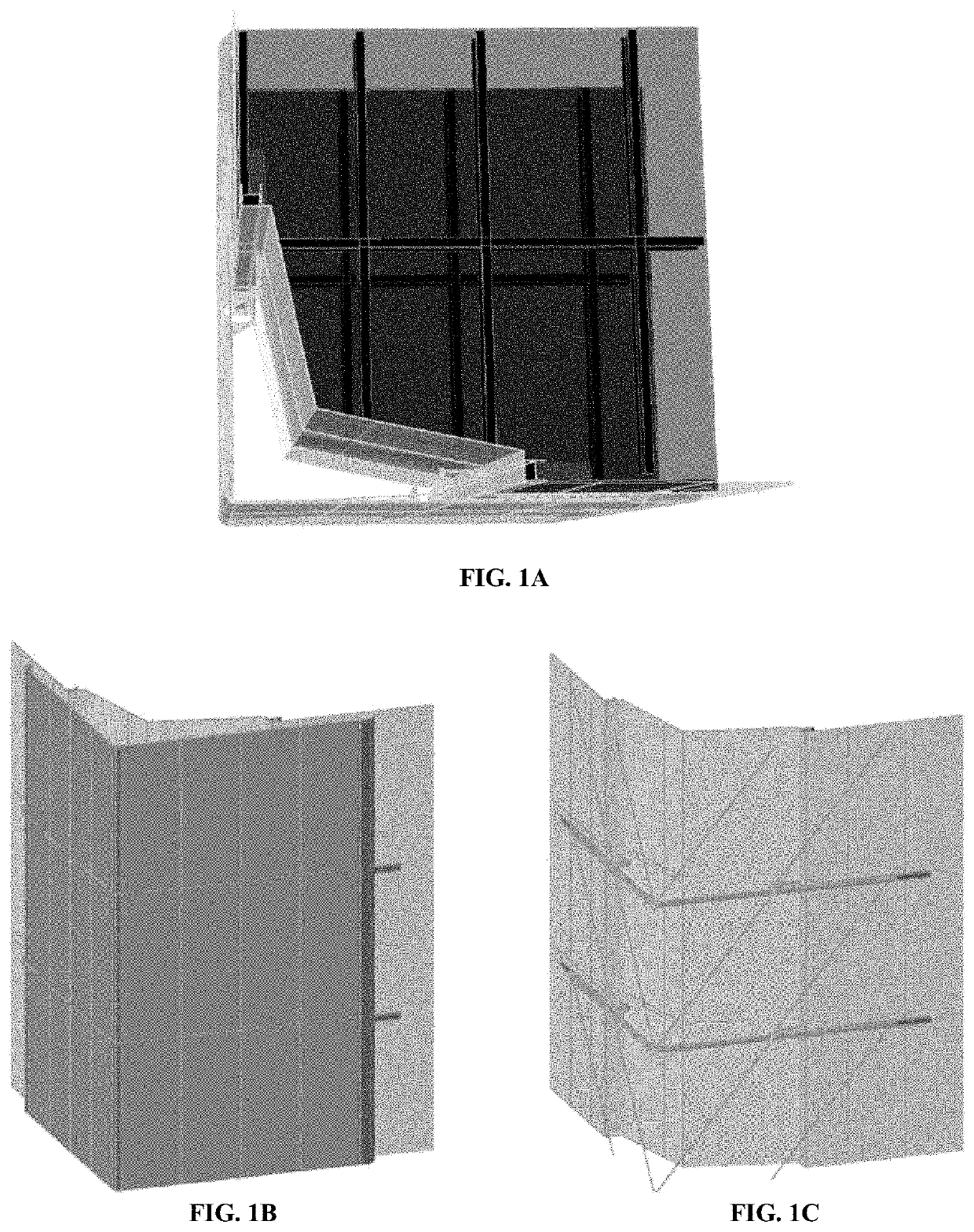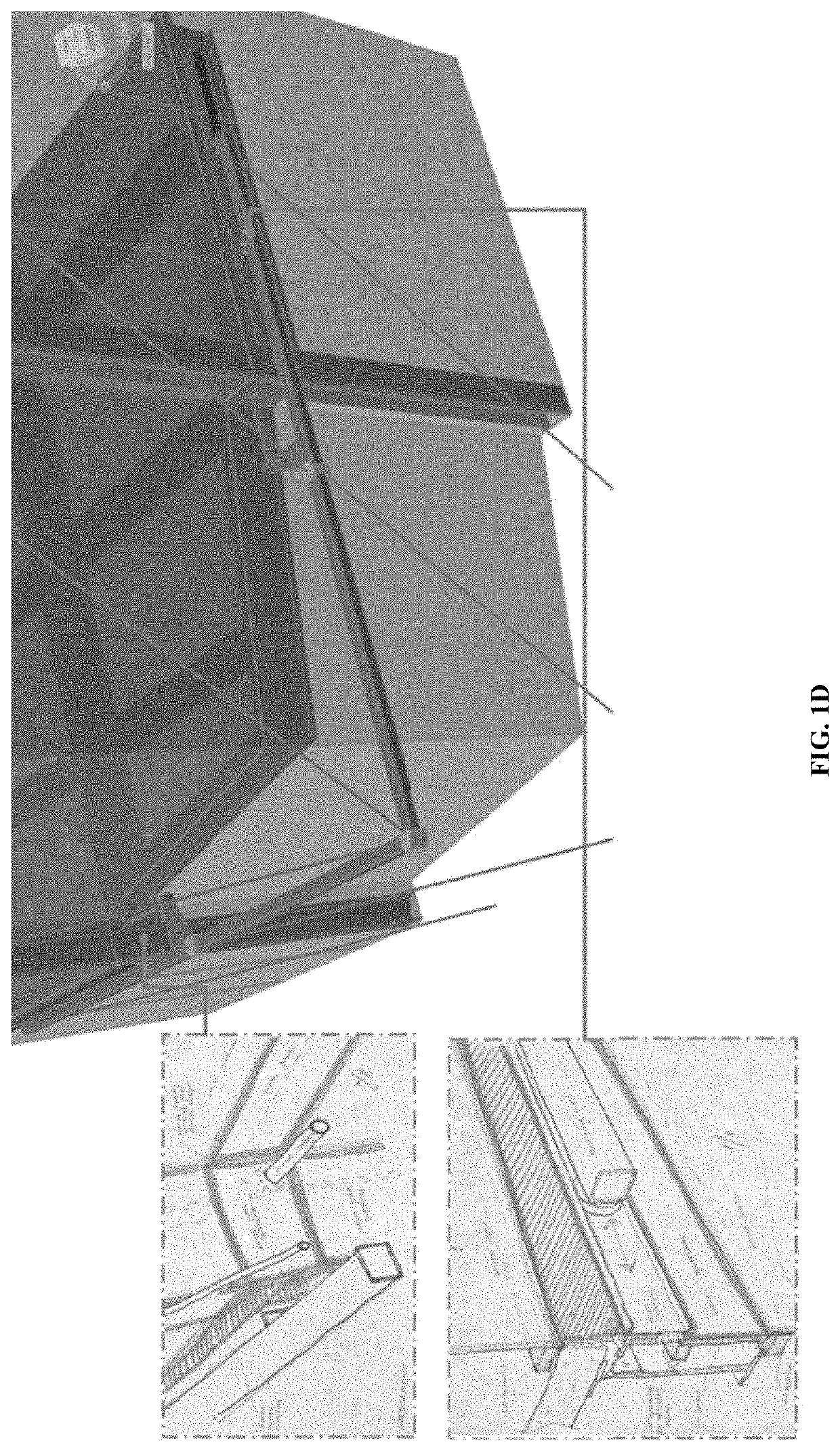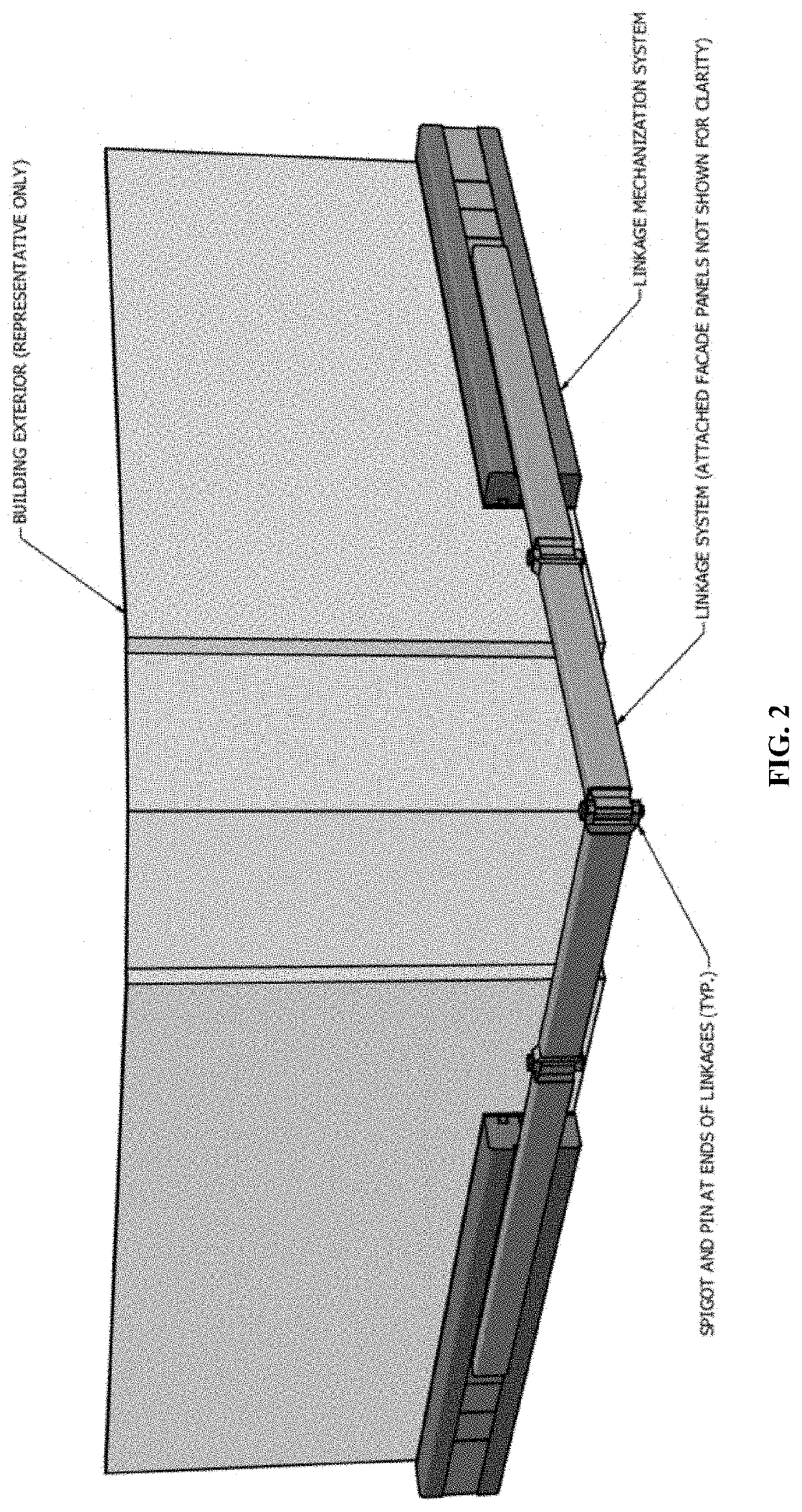Adjustable cladding for mitigating wind-induced vibration of high-rise structures
a technology of adjustable cladding and high-rise structures, which is applied in the direction of covering/linings, building types, constructions, etc., can solve the problems of reducing the amount of leasable floor space, and reducing the amount of wind-induced vibration of the structure. , to achieve the effect of reducing the wind-induced vibration of the structure, and reducing the amount of leas
- Summary
- Abstract
- Description
- Claims
- Application Information
AI Technical Summary
Benefits of technology
Problems solved by technology
Method used
Image
Examples
Embodiment Construction
[0035]Exemplary aspects of the disclosure are described herein in the context of an adjustable cladding system and related methods, various aspects of which being suitable to reduce vibrations when incorporated into tall buildings or structures such as skyscrapers and towers. Persons of ordinary skill in the art will realize that the following description is illustrative only and is not intended to be in any way limiting. Other aspects will readily suggest themselves to those skilled in the art having the benefit of this disclosure. Reference will now be made in detail to implementations of the example aspects as illustrated in the accompanying drawings. The same reference indicators will be used to the extent possible throughout the drawings and the following description to refer to the same or like items.
[0036]As indicated above, many modern structures (e.g., tall and super tall buildings) are adversely affected by vortex-induced vibration. Traditionally, wind-induced motion contr...
PUM
 Login to View More
Login to View More Abstract
Description
Claims
Application Information
 Login to View More
Login to View More - R&D
- Intellectual Property
- Life Sciences
- Materials
- Tech Scout
- Unparalleled Data Quality
- Higher Quality Content
- 60% Fewer Hallucinations
Browse by: Latest US Patents, China's latest patents, Technical Efficacy Thesaurus, Application Domain, Technology Topic, Popular Technical Reports.
© 2025 PatSnap. All rights reserved.Legal|Privacy policy|Modern Slavery Act Transparency Statement|Sitemap|About US| Contact US: help@patsnap.com



